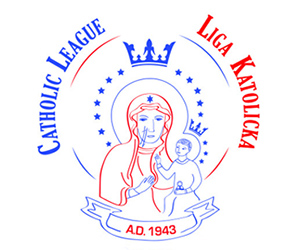
“How can I ever express the happiness of the marriage that is joined together by the Church strengthened by an offering, sealed by a blessing, announced by angels and ratified by the Father? …How wonderful the bond between two believers with a single hope, a single desire, a single observance, a single service! They are both brethren and both fellow-servants; there is no separation between them in spirit or flesh; in fact they are truly two in one flesh and where the flesh is one, one is the spirit.” Tertulian, Ad uxorem, 2, 9; John Paul II, adhort. apost. Familiaris consortio, 13.
The unity of two people in the sacrament of marriage is something special. God Himself created this, and through creating us in His image, gave us the ability to communicate and exchange love, which He Himself – as the Triune God is a source and model. Thus God has equipped us in many ways giving us the joy for all the methods of constructing unity – and this all happens “through Him, with Him and in Him.”
“Conjugal love involves a totality, in which all the elements of the person enter – appeal of the body and instinct, power of feeling and affectivity, aspiration of the spirit and of will. It aims at a deeply personal unity, a unity that, beyond union in one flesh, leads to forming one heart and soul; it demands indissolubility and faithfulness in definitive mutual giving; and it is open to fertility. In a word it is a question of the normal characteristics of all natural conjugal love, but with a new significance which not only purifies and strengthens them, but raises them to the extent of making them the expression of specifically Christian values” (CCC 1643)
The goal of marriage is the salvation of both partners as well as leading their children to Heaven. Another goal is the covenant, the community of both people, which should lead them to a fuller personal growth and love in the image of the Persons of the Trinity. The likeness of men and women to God is thus shown in the Book of Genesis. Children then become the fruits of this deep personal union. The parenthood of the married couple also likens them to God – the Father of all creation. Thus the personal communion of the man and woman, which was in past ages characterized as “orders of marriage” demonstrate a practical path to holiness and Christian perfection
The Gift, the Charism, and the Sacrament
In order to fully realize the call to holiness within marriage, both people must become people of deep prayer. Only through developing this ability will they be able to accept each other as gifts, since the Giver is Christ Himself. The married in Christ give and receive each other simultaneously. To do this, they need “eyes of the heart” and a well-developed ability to see each other spiritually. He created in us the ability to love, gave us emotions, senses, aspirations, instincts and the command to be fruitful. And, because “everything that lives praises Him,” we should return with all of our dimensions the love that He gives us. That is the will and the desire of God.
Any person’s dimension can be a channel to communicate love in marriage – and if the person becomes more holy by the act of Faith in God, they will in turn receive a particularly godly character and dignity. The King himself invites his children to a feast of love – touching first the heart, moving the feelings and emotions, turning the body into a joyful tool of service. Grace and blessings flow upon the invited, and openness to the gift of life is something natural and not causing fear.
Joyfully married couples within Christ, filled with the experience of Grace, open to supernatural dimensions of their calling change into witnesses of active love, and the fire in their hearts pushes them into even more dynamic service. This demonstrates marriages to be a charism, a gift of Grace turned towards building a better community, to witnessing for love, with the marriage act raised to an even higher level, because they touch within it the mystery of God’s gift from the tree of life and God Himself blesses their love and trust. They become a sacramental sign of active grace. This way the married couple will discover His nearness and learn the necessary wisdom to go farther.
Roman Harmata







